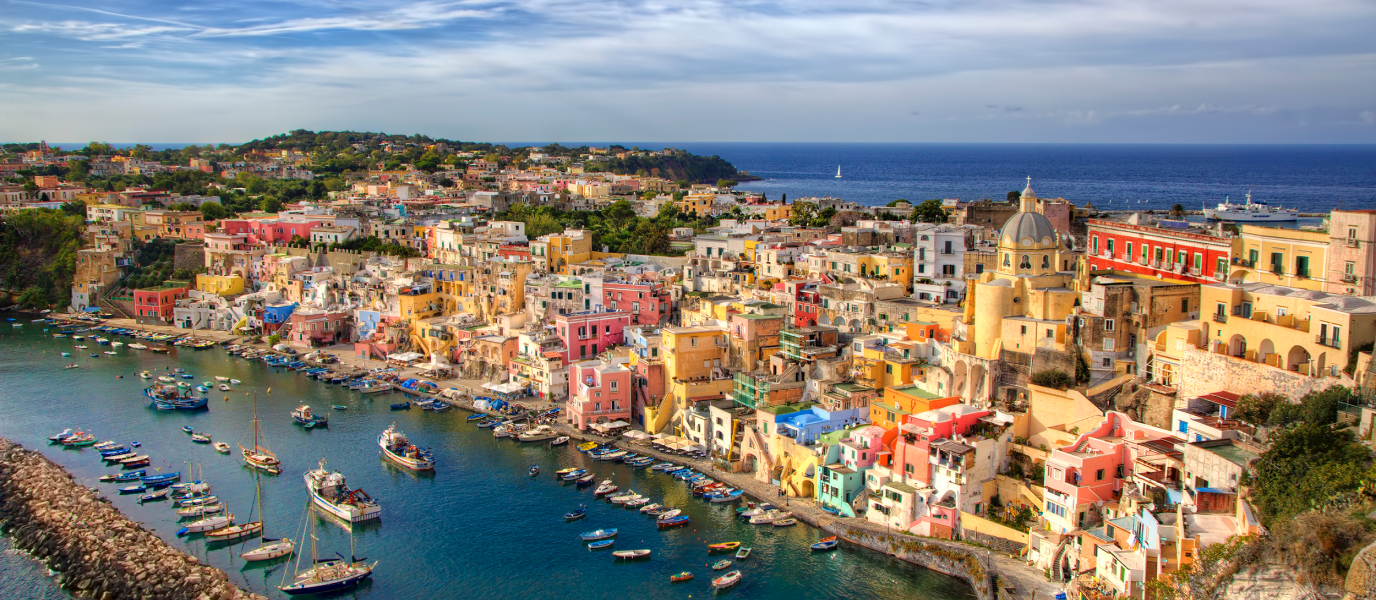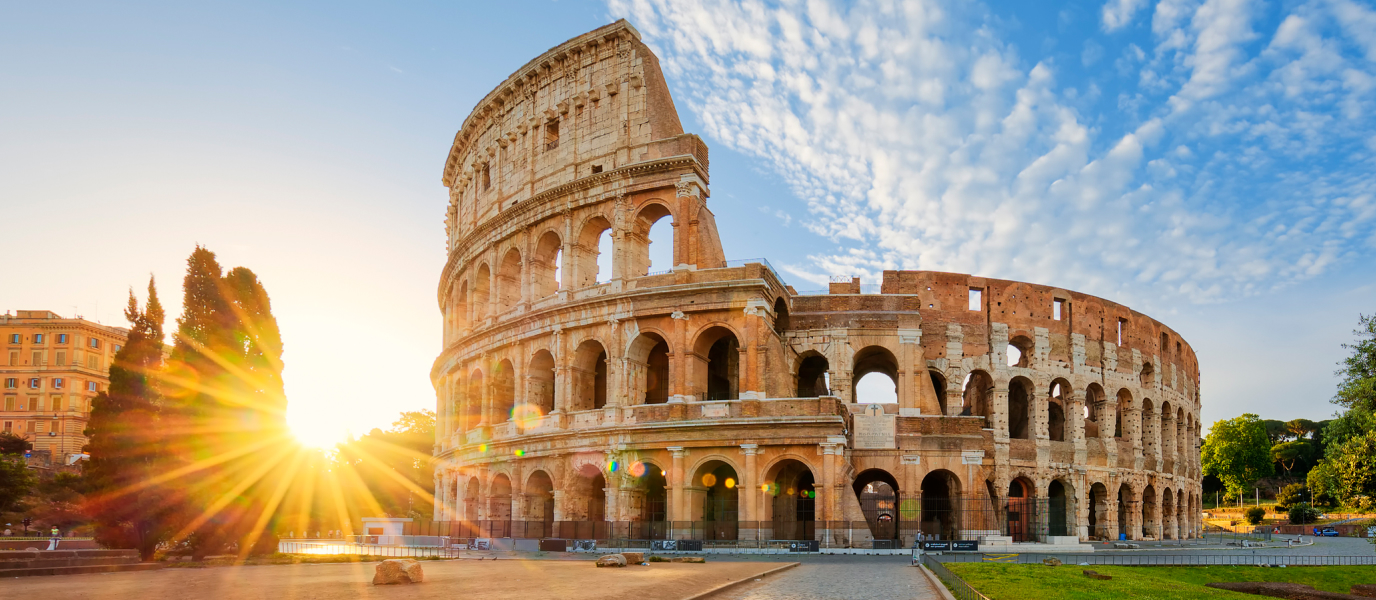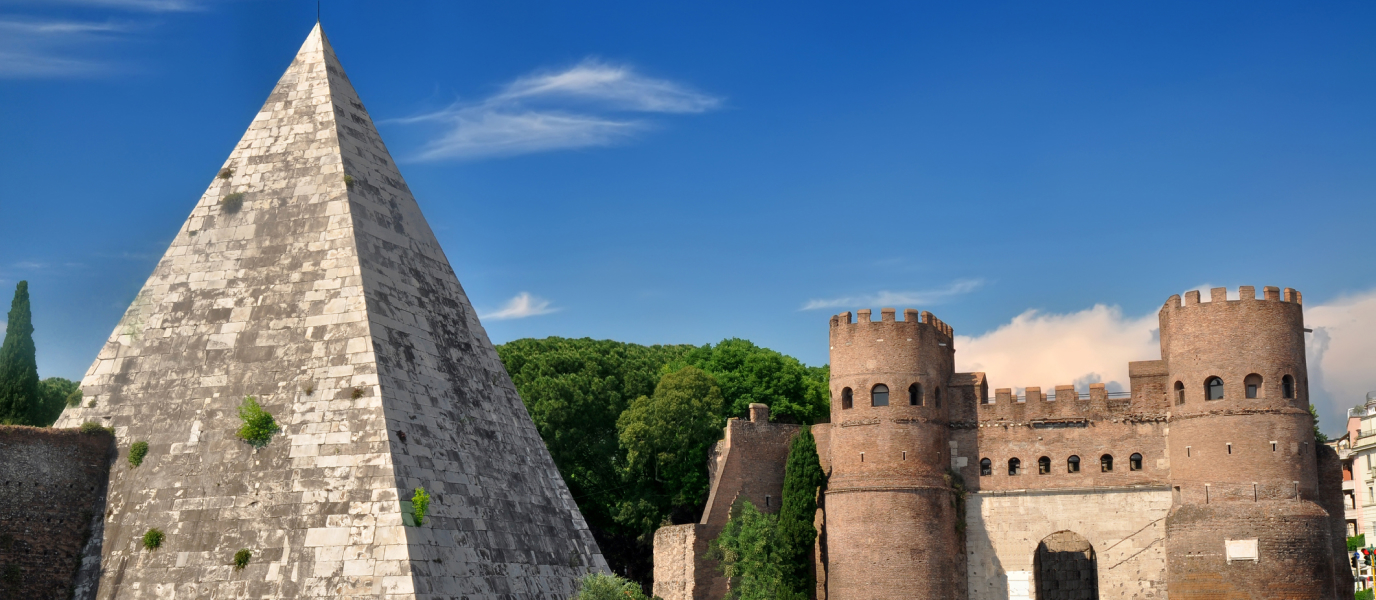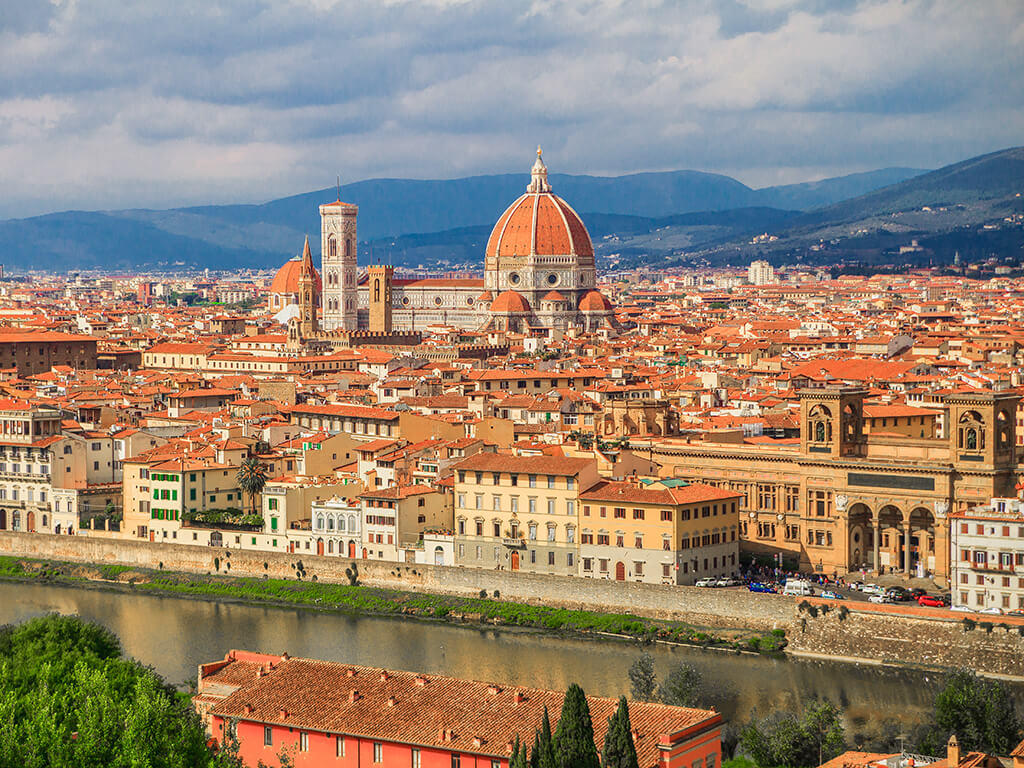The chaotic and unyielding personality of Naples, the most populous city of southern Italy, is a charming labyrinth of picturesque contrasts. The best way to explore the city is to let yourself be guided by your curiosity – there is no such thing as taking a wrong turn. There are a-thousand-and-one ways to discover this city, so let your curiosity guide you.
Naples has always been an important cultural centre. First founded by the Greeks, it has welcomed countless different peoples over the course of history. Romans, Byzantines, Normans, French and the Spanish have all helped shape this great city. It’s impossible not to think of the infamous Camorra, the Italian mafia, when wandering the city. Or, be awestruck at the soul-stirring views from the viewpoints up on Mount Vesuvius. A short visit to Naples will allow you to visit some of its most emblematic attractions, but to truly uncover its essence, you may need more than a couple of days.
The top attractions of Naples
Visiting the old quarters of any city is a must and it is no different in Naples. One of the three most important streets in the old town is Via Spaccanapoli. It means Naples split in half. For the last 3,000 years this street has split the old quarters into south and north.
The street runs in a straight line – a unique feature of labyrinthine-like old towns – and depending on the section of the street it bears a different name.
There is something charming about the grittiness and decadence of this part of town; a testament of old-world charm. This neighbourhood is very much lived in by the people: the daily frenzy of the comings-and-goings of the neighbours, the laundry hanging from the Juliette balconies, the children playing ball and the honking Vespas zipping by. Family-run businesses, artisan worships, traditional pizzerias all line these ancient streets and intrinsically make up the social fabric of the city.
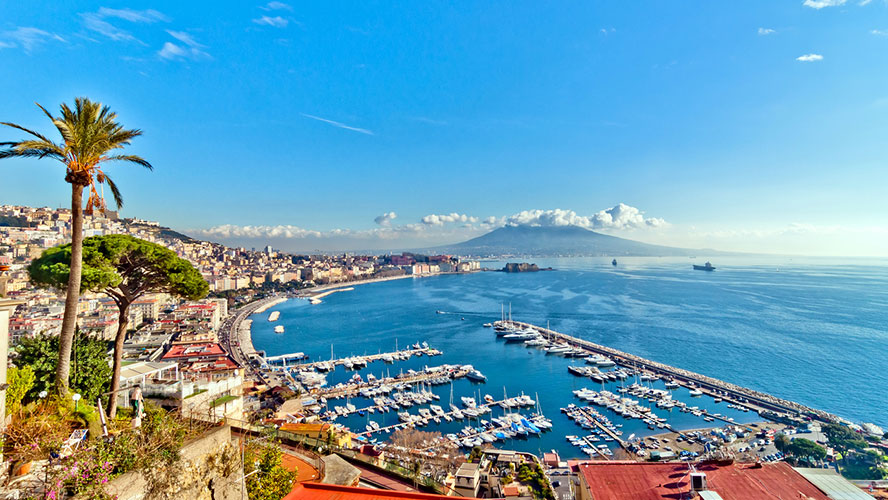
Via Spaccanapoli is splattered with interesting landmarks, including Plaza Gesù Nuovo and the 15th-century church of the same name, and San Domenico Maggiore. The obelisk in the centre of the square is one of the three monumental columns of the city. A sculpted siren appears in the lower part of the column, a symbol of the city.
Naples Cathedral: Cattedrale di San Gennaro
The Duomo of Naples, also widely known as the Cattedrale di San Gennaro, is the most iconic and important church of the city. It was consecrated in honour of San Gennaro (Saint Januarius). The Duomo was built on the foundations of a temple dedicated to Apollo. Construction began in 1314 and lasted several centuries. The stunning neo-gothic façade is a gleaming example of master masonry and the interior is a stunning mix of Gothic and Baroque features.
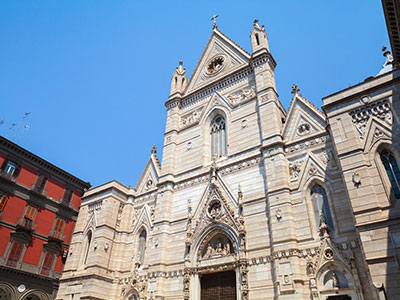
The cathedral is a centuries-old treasure trove; from the gilded coffered ceiling and the 4th-century mosaics in the baptistery to the Capella di San Gennaro. The Capella, also known as the Chapel of the Treasury, houses the silver bust in which sits the skull of San Gennaro, patron saint of Naples, and the vials that hold his blood.
Monasterio di Santa Chiara
The 14th-century religious complex of Santa Chiara is also located in the old quarters. It houses the largest Gothic church of all of Naples and a museum displaying frescos by Giotta. It was built between 1310 and 1340 on the site of ancient Roman baths. The four Majolica-tiled cloisters are a prominent feature of the monastery.
The gardens are decorated with colonnades and make for the perfect place to sit down and enjoy the placid stillness. The bustling city clamour seems light moons away in this privileged location.
Castel dell’Ovo and the legend of Virgil
Naples is a sea-faring city and Castel dell’Ovo (Castle of the Egg) is testament of that history. It was built by the Normans in the 12th century on the island of Megaris. The castle owes its name to a legend about the Roman poet Virgil, who hid a magical egg in the foundations to support the fortifications, warning that when the egg broke, the castle and Naples would be destroyed.
The site also houses Chiesa di San Salvatore. The church is located on Lungomare, the waterfront promenade and affords spectacular views of Naples, the Gulf of Naples and the looming Mount Vesuvius.
Quartieri Spagnoli: a history-filled maze
The Quartieri Spagnoli is a historic district located near the Port of Naples. The quartieri were named after the Spanish garrisons who were housed here in the 16th century. The Kingdom of Naples was intermittently part of the Crown of Aragon (Spain) between the 16th and 19th centuries. It was ruled by the Spaniards, then the Austrians, to be reconquered by the Bourbons in 1736 until Napolean Bonaporte occupied the city at the beginning of the 19th century.
The main street running through the Quartieri is named after Pedro Álvarez de Toledo, the Spanish viceroy of Naples.
The bustling maze-like district is made up of busy, narrow streets. Several notable landmarks are scattered throughout the Quartieri, including Santuario della Madonna Dello Splendore, a16th-century Baroque sanctuary; Villa Adriana; and Castel Novo, a medieval castle. There is also incredible street art adorning the walls of this neighbourhood’s buildings, including an impressive mural of the city’s football idol, Diego Maradona.
The authenticity and charm of the Quartieri is best discovered during the day – there is a high level of criminality at night-time so enjoy its wonders under the watchful eye of the sun.
Running beneath the Quartieri Spagnoli is the fascinating Subterranean Naples, a massive underground network of galleries, caves and even reservoirs dating back to the Greeks. During World War II, it was used as a bomb shelter and later as a landfill. Today, it is one of the city’s top attractions.
The catacombs of Naples: the underground city
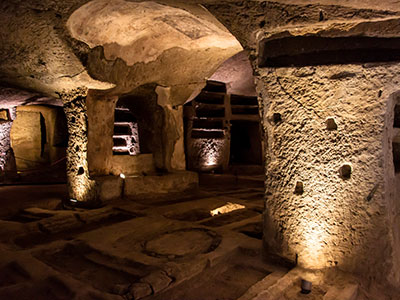
The catacombs of Naples, also known as the Catacombs of San Gennaro, are located in the Sanità district and are the largest Christian catacomb complex in southern Italy. There are approximately 3,000 tombs from between the 2nd and 4th centuries, distributed on the two levels making up the 5,800 m2 burial site.
The wealthy were interred in cubiculums while the poor were buried in the ground. Some of the niches were adorned with beautiful frescos that can still be seen today. Saint Agrippino was buried in these tombs.
Piazza di Plebiscito and other top attractions
Piazz di Plebiscito is the largest square of all Naples. It is located off Via Toledo, the commercial axis of the city. Some of the city’s top attractions are located in its vicinity, including Palazzo Real, Basilica Reale Pontificia San Francisco da Paola, the shopping gallery Galería Umberto, Teatro San Carlos and Teatro del Castel Nuovo.
If you still have time, pay a visit to Museo Cappella Sansevero on Via Sanctis. It houses the renowned masterpiece by Giuseppe Sanmartino, the Veiled Christ, a marble sculpture with a sculpted shroud that is nothing short of perfection.
What to eat in Naples: the top pizzerias

Pizza is king in Naples. Having a slice of a succulent Margarita or Marinara pizza is literally taking a bite out of Naples’ history. The origins of Neapolitan pizza date back to 17th-century when locals invented what would become one of the most popular foods in the world: pizza. Until then flatbread had never been topped with tomatoes, a key characteristic of pizza. It was popular among the working class since it was simple and affordable to make. However, it wasn’t long before it got the attention of aristocrats.
One of the most acclaimed pizzerias in Naples is L’Antica Pizzeria da Michele and it gained international stardom when it was featured in the film Eat, Pray and Love, starring none other than Julia Roberts. The historic Pizzeria Brandi, located in the Quartieri Spagnoli, earned its repetition for having invented Margherita pizza. The story goes that they prepared a pie for the Queen of Italy, Margherita di Savoia, garnished with tomatoes, cheese and basil, to represent the colours of the Italian flag in her honour. And that is how Margherita pizza was invented. There are also less well-trodden but just as yummy pizzerias in the city. They includes: Sorbillo Pizzeria on Via dei Tribunal and Pizzeria 50 Kalò, located in the prosperous Mergellina district.
Pizza isn’t the only local delicacy you can enjoy while in Naples; the city is a culinary paradise and serves up other earth-shattering good pasta dishes. For those with a sweet tooth, try Sfogliatelle ricce, a shell-shaped puff pastry filled with different types of flavoured ricotta. This authentic Neapolitan dessert is simply scrumptious when eaten warm.




































































